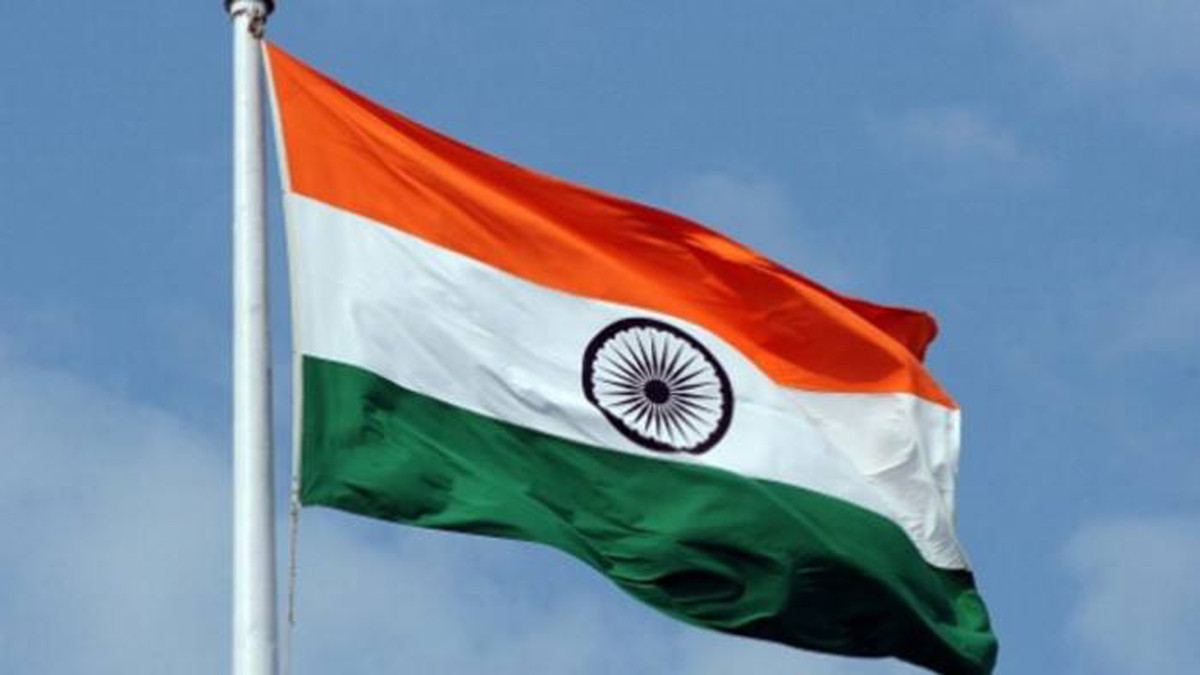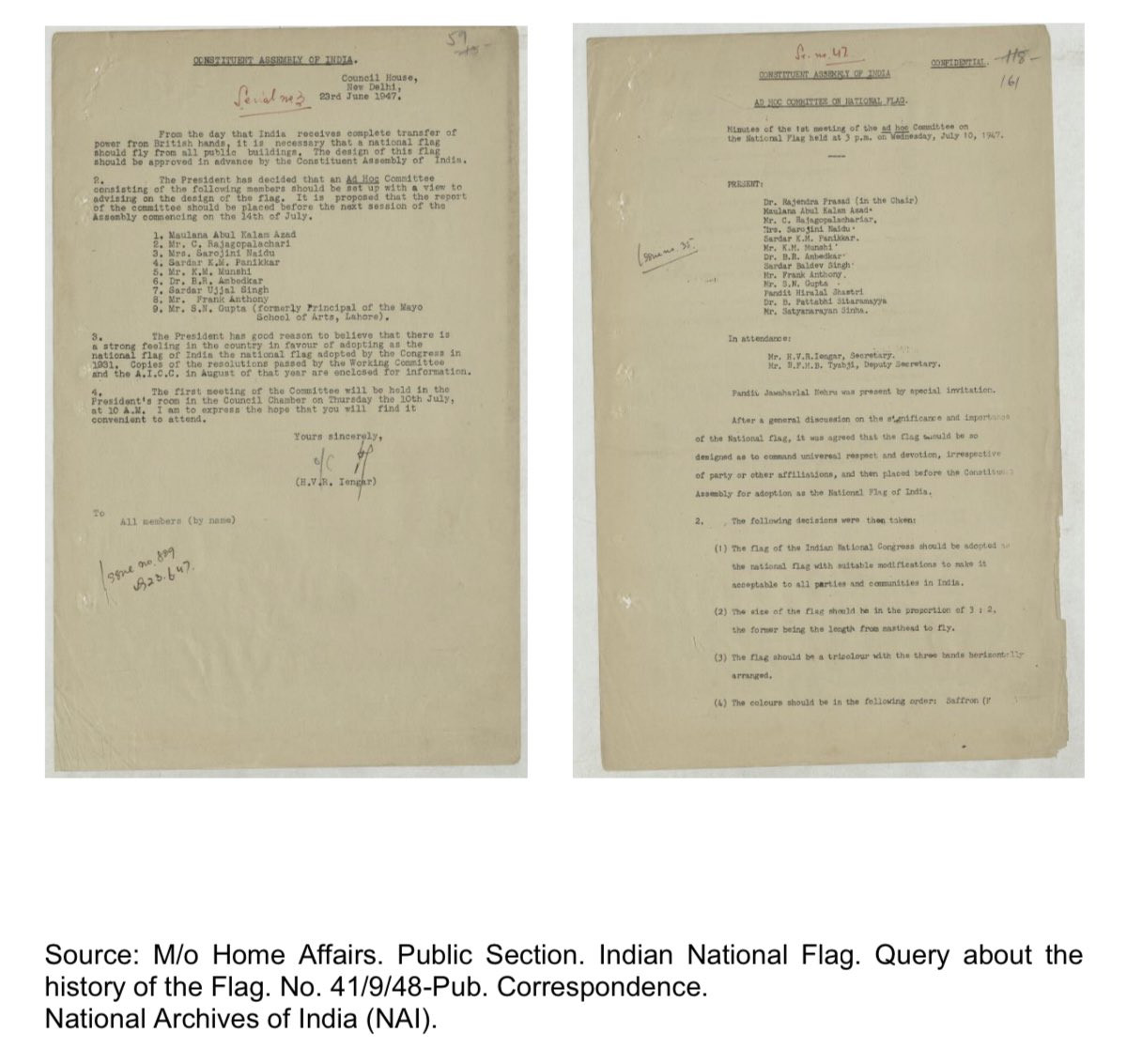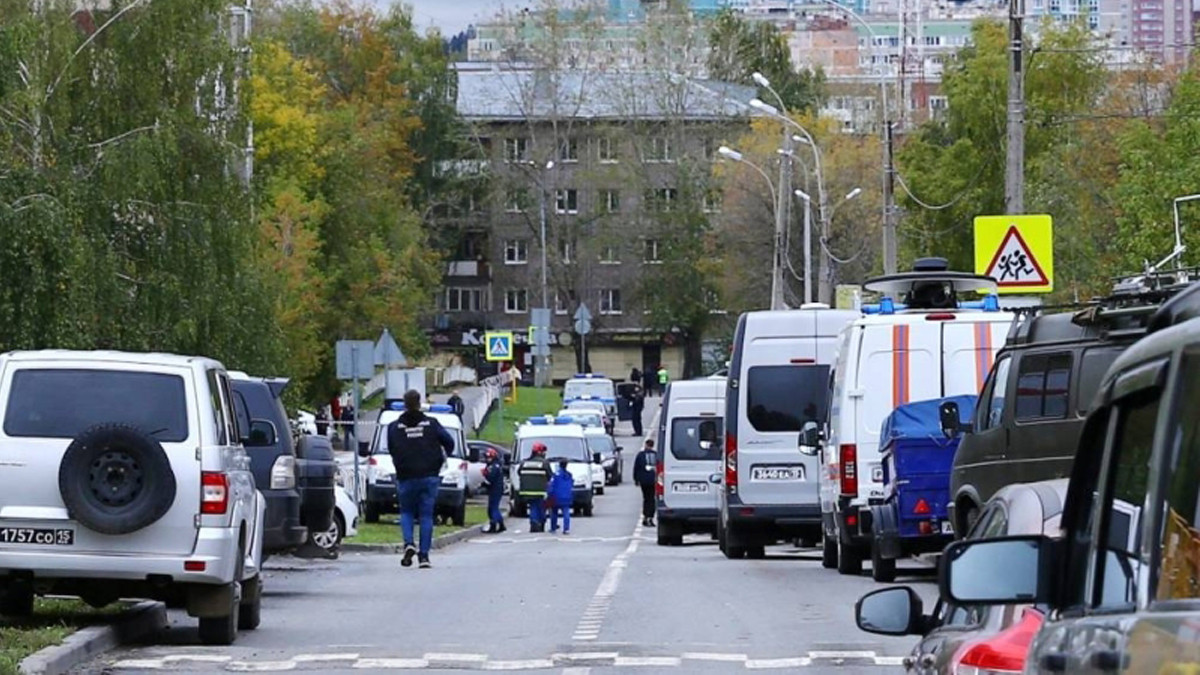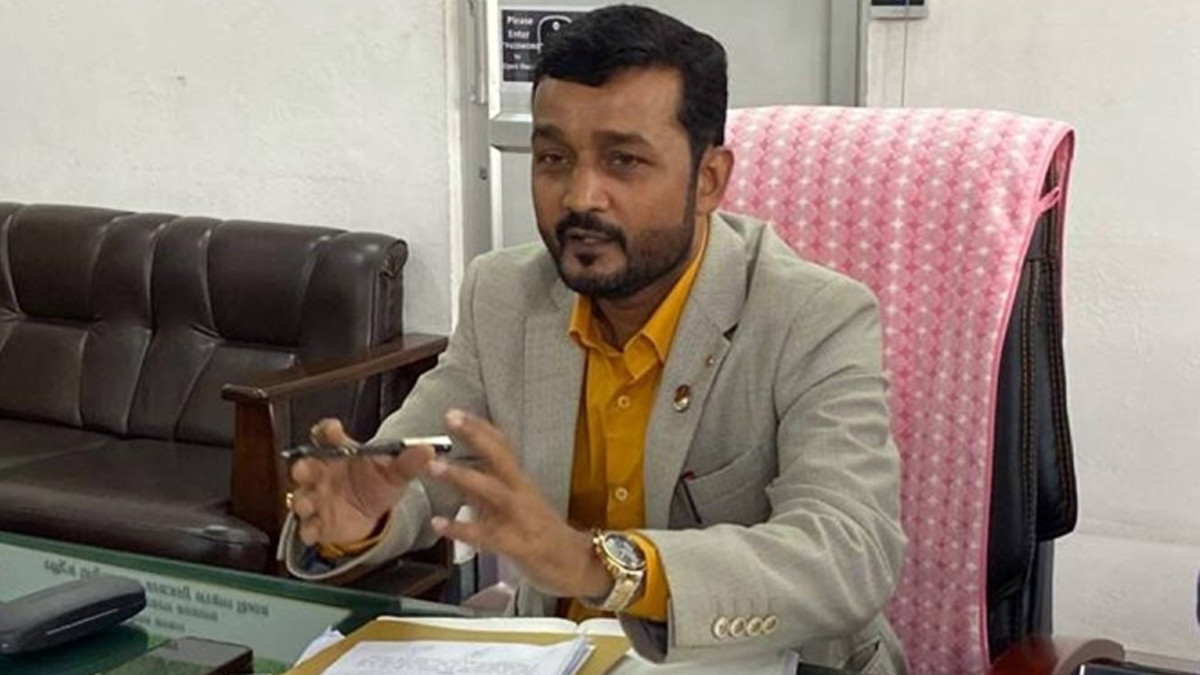 The national flag of India
The national flag of India
Every year, India celebrates the National Flag Day on July 22 as it was on this day that the tricolour was adopted in its present form in 1947 as India’s national flag.
Prime minister of India Narendra Modi today on Twitter wrote, "Today, 22nd July has a special relevance in our history. It was on this day in 1947 that our National Flag was adopted. Sharing some interesting nuggets from history including details of the committee associated with our Tricolour and the first Tricolour unfurled by Pandit Nehru."
Today, 22nd July has a special relevance in our history. It was on this day in 1947 that our National Flag was adopted. Sharing some interesting nuggets from history including details of the committee associated with our Tricolour and the first Tricolour unfurled by Pandit Nehru. pic.twitter.com/qseNetQn4W
— Narendra Modi (@narendramodi) July 22, 2022
The National Flag of India has great importance in every Indian people’s heart as it denotes and represents their country as well as their country's freedom from the British rule in 1947. The Flag of the Union of India or the Tricolor as it is lovingly called represents not only the Union of India but also its integration, representing different religions and cultures of India.

Evolutionary history of the Indian tricolour flag
Indian Tricolour, which electrified the national movement, also has an evolutionary history. It is briefly explained below-
Bhagini (Sister) Nivedita flag - 1904:
The first version of the Indian flag came in the year 1904 when Sister Nivedita, more fondly called as Bhagini Nivedita, a disciple of Swami Vivekananda designed a yellow and red flag with a 'Vajra' in the centre and 'Vande Mataram' written in Bengali in the centre.

Unofficial flag of India - 1906:
On August 7, 1906, the first unofficial Indian flag was hoisted in Parsee Bagan (Modern day Girish Park) in Kolkata. This time, the flag had three equal horizontal stripes of green, yellow, and red. Moreover, the top green strip had eight lotus flowers, half-opened in white. The crescent moon and the sun in the bottom red half represented Islam and Hinduism, respectively. Meanwhile, the centre panel in yellow had 'Vande Matram' written across it in the Devnagiri script.

Berlin Committee Flag -1907:
Later in the year, based on the flag unfurled at Parsee Bagan, another flag, which would come to be known as the 'Cama flag' or 'Berlin Committee flag' came into existence. It was collectively designed by Madam Bhikaji Cama, Veer Savarkar, and Shyamji Krishna Varma. Instead of the red in the top horizontal space, it had saffron and eight lotuses.
Reportedly, this was the first time that the Indian flag was unfurled at the international level. It was hoisted at the International Socialist Conference in Stuttgart, Germany. Another iteration of the same flag had one lotus and seven stars denoting saptarishi.

The Home Rule Movement flag - 1917:
After two iterations of the national flag in a relatively short period, the next change only came in 1917. Designed by revolutionaries Annie Besant & Lokmanya Tilak, this flag came at the peak of the 'Home rule movement'. The aim of the home rule movement was the attainment of home rule or a dominion status for India under the British empire.
This particular flag differed vastly from the Calcutta and Cama flags. Instead of three horizontal stripes, the new flag had five red and four green horizontal strips arranged alternately, with seven stars in the saptarishi configuration superimposed. In the top left corner lay the Union Jack while a white crescent star stood in the opposite corner.

The national flag unofficially adopted in 1921:
Four years later, when Mahatma Gandhi was visiting Vijayawada for the All India Congress Committee, Pingali Venkayya designed a flag and submitted it to him. The flag initially had only green and red, representing Muslim and Hindu communities. However, Mahatma Gandhi suggested adding a white stripe and a spinning wheel or Chrakha. The spinning wheel was popularized by Gandhi as a symbol of the nationalist struggle. Later on, this flag would lay the foundation of the current tricolour.

Flag adopted in 1931:
A decade later, Pingali Venkayya redesigned the flag to make it more inclusive. this time, the red was removed for saffron and placed at the top. The white stripe was dropped into the middle while green was retained at the bottom. The Charkha still found its place in the middle. However, it was clearly stated that the flag and its colour had no significance for any particular community. The Saffron signified strength, White stood for truth and the bottom depicted fertility. In the end, a resolution was passed by Congress to make it the official flag of the country.

The Tricolour:
The final iteration of the current tricolour came in 1947. The charkha was replaced by Ashoka's Dharma chakra as the emblem on the flag in the middle white stripe. The Constituent assembly accepted and adopted its as the country's national flag. It served as the national flag of the Dominion of India between 15 August 1947 and 26 January 1950 and that of the Republic of India afterwards.

Who were the members of the committee who advised on the design of the flag, which the Constituent Assembly later approved?
The members included were :
* Maulana Abul Kalam Azad
* C Rajagopalachari
* Sarojini Naidu
* KM Panikkar
* BR Ambedkar
* Ujjal Singh
* Frank Anthony
* SN Gupta
Who presided over the first meeting of the committee?
Dr. Rajendra Prasad presided over the meeting. Jawaharlal Nehru was present by special invitation.
Also attending the meeting were KM Munshi, Sardar Baldev Singh, Frank Anthony, Pandit Hiralal Shastri, Dr. Pattabhi Sitaramayya, and Satyanarayan Sinha.
What was the mandate of the committee?
The mandate was to design a flag that would command universal respect and devotion, irrespective of party of other affiliation, and place it before the Constituent Assembly for adoption as the National Flag.
What was the outcome of the meeting on July 10, 1947?
It was decided that the Indian National Congress should be adopted as national flag with suitable modifications to make it acceptable to all parties and communities in India.
How would the national flag be?
It was decided that the flag should be a tricolour with three bands horizontally arranged. The colours should be in the order -- saffron, white and dark green.
There shall be a wheel with 24 equally spaced spokes in navy blue to represent the Charkha, in the centre of the white band. The design of the wheel shall be the same as that which appears on the abacuse of the Sarnath Lion Capital of Asoka. The wheel's diameter shall approximate the width of the white band.
The flag should be in proportion to 3:2 -- the former being the length of the flag from masthead to fly.
- Report By Adarsha Adhikari with News Agency Inputs









